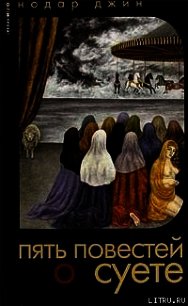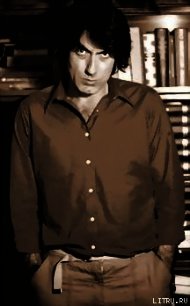Философское - Джин Нодар (книги без регистрации бесплатно полностью сокращений .TXT) 📗
The contemporary tendencies of science include more and more clear demonstration of the strong non-reversibility of time even in its local elements: now reflects a macroscopic difference between «before» and «after».
In this sense, the present day is «nil between nil and nil»; from this angle, the idea of the essential peculiarity, the essentially contradictory nature of our epoch becomes understandable; it also becomes obvious that it is necessary to seek new and powerful impulses capable of ensuring the further functioning of those balancing systems which are the only things that permit man to overcome the tragedy of non-existence by means of a life-giving creative impulse. There is only one alternative to this quest — universal despondency, and, as a result, an end to all and everything through self destruction since our cogito offers us an abundance of means for that.
At the same time, it is just as clear that these impulses are to be sought, again, just in the sphere of creativity which can alone withstand the cancerous metastases of rationalism, in the sphere of the single stream of thought and feeling. The pressing nature of these quests was already felt yesterday, when the young Marx repeated with conviction the axiomatic idea of our ancestors — alas, mocked at by the cogito-centric history of human society: man affirms himself in the world not only through his thoughts, but also through all his senses.
… And through all the senses. The comeback of man to himself in our epoch of «nil between nil and nil» may be effected only on condition that all these forms of perceiving the world, the reaction to it and man's self-assertion in it which have throughout the centuries been suppressed by rationalism and devoured by the deified calf of consciousness, are cultivated. The power of reason should be applied today just to evolve and introduce an organized and ramified system cultivating pathos, confirming the whole-oneness of man's thought with all his senses. All the noble experience of reason, all the undying achievements of the rationalistic cultural tradition must, at the same time, control the rotation of this newly-organized system of «synthetic» Apollo-Dionisian institutes around the ancient axis of immutable and initial ethical norms, for the complete «comeback» of man to these norms, in a certain measure, constitutes the re-integration of man. It is only the triumph of a «pathos» attitude to existence, discernible in the synthesis of the diverse forms of consciousness that is capable of converting the Homo Apatheticus of today into Homo Sympatheticus, of Homo Sapiens into Homo Aestheticus, if the aeasthetical is understood as it should be: «the highest act of reason, encompassing all ideas, is an aesthetic act» (Hegel).
In the light of what has been said, it is hardly necessary to state more exactly that speaking of the synthesis of forms of consciousness, we mean by «consciousness», precisely all the wholeness and oneness of human psychics as it is, i.e., so to say, also «non-consciousness» which has generated and is able to generate no less majestic and stable forms of culture than consciousness. In the light of the meta-principle mentioned above, it should likewise be clear that the synthesis of the forms of consciousness presupposes further unification, a maximum inter-penetration of essentially indivisible principles — consciousness and reality, the spiritual and the material. The age-old but paradoxical and destructive tradition of differentiating these principles that have no separate existence, a tradition set up by the mind that always seeks convenience, was manifested, as is known, in a hideous dismemberment of the whole, indivisible Universe into two sectors. This dismemberment of the Universe took place, of course, only in the human head; but the initial conventionalities of thought could not but appear as undoubted non-conventional reality in our persistently homo-centristic world, a world where «all things serve man». During the whole course of his history as Homo Sapiens, man has scrupulously and indefatigably been remaking the world in the light of his rational conventionality which had acquired an actual effect of being absolute (un-conventional), in the light of the principle «the spirit and life», «consciousness and reality». During the ages of its activity, this principle generated a particular, independently functioning cultural system (in all its multi-component wholeness), that contradicted the natural order of things; however, this system took such firm root in reality that it even acquired the paradoxical ability to determine, to condition this reality. The word gave birth to the thing. However, the synthesis that we imply and consider desirable rests, first and foremost, on the wholeness and oneness of artificially (forcibly) separated principles, — consciousness and reality, the word and the thing, the spiritual and the material. This tendency towards unity can be detected today in various and, in many cases, quite obvious processes in contemporaneity.
It is in building up this tendency that modern society may find optimism; it is just in this tendency that society has the right to see a force which can withstand the corruption proclaimed by the all-disuniting «imperialism of reason». «Thinking! — exclaimed Paul Valery — This means losing the thread!» Today society is seeking for this lost thread, and the purpose of this thread is to reunite the dismembered parts of the world that was whole in the past and can be whole again in the future. And the essence of this thread is a «pathos» attitude to reality; creativity is the «highest thinking», and the «highest thinking» means recovering the thread.
Cogito alone is, in principle, incapable of holding man back at the edge of the precipice; still less it is capable of bringing his afterwards to «the promised land» of immortality. It is only in the life-giving atmosphere of a creative attitude to the world, only in the realm of «the highest thinking», of Pathos which rests upon the united unbroken platform of man's essential forces (consciousness and non-consciousness, «thought and all the senses»), is reason able to harmonize this one world. Only creation brings man back to himself. This is why, when discussing the best organization of this world of ours, Marx said that the future should provide every man with the chances for a maximum development to his creative impulses which, as we assert, brings man back to the past lying before him.
Опубликовано в «Бессознательное: природа, функции, методы, исследования» (Материалы Международного Симпозиума По Проблеме Бессознательного, Академия наук ГССР)
Изд-во Мецниереба, Тбилиси, 1978
О ПСИХОЛОГИЧЕСКОЙ НЕОБХОДИМОСТИ ИСКУССТВА
Н. Я. ДЖИНДЖИХАШВИЛИ
(Тбилисский государственный университет, факультет философии и психологии)
«Искусство есть важнейшее средоточие всех биологических и cоциальных процессов личности в обществе, способ уравновешивания человека с миром в самые критические и ответственные минуты жизни» [5, 33]. Эту заключительную мысль из известного исследования А. Выготского мы хотели бы представить как своеобразный итог длительного изучения искусства в качестве инвариантной системы психических процессов и, в частности, как современную модификацию идей о существовании психологических установок на искусство, идей о потребности катарсиса.
Не отвлекаясь на критико-теоретическое осмысление истории этих идей, отметим, что, но нашим наблюдениям, их эволюция носила характер социологизации и расширения реальных границ термина «очищение». [185] Потребность катарсиса, сразу же воспринятая как основной момент психологических установок на искусство, тем не менее, понималась сперва как реакция на локально значимую человеческую способность реального изживания эффектов посредством их стимулирования. Иными словами, обращалось внимание на то, что, несмотря на иллюзорность ситуации, заявленной в художественном произведении, переживания, возбуждаемые ею, абсолютно реальны. Отсюда заключалось, что искусство является средоточием «биологических процессов» общественной личности и поэтому обладает способностью нейтрализации присущих человеку «неудобных» чувств. «Неудобность» этих чувств определялась, однако, не только с психофизиологической точки зрения (страх), но и с морально-общественной (злоба, зависть). Разумеется, это придавало ранним учениям о катарсисе социальный смысл, но лишь в той мере, в какой речь шла об изживании «негативных» общественно-значимых переживаний. Кстати, отголоски такого представления о катарсической функции искусства можно услышать сегодня в тех буржуазных эстетико-социологических концепциях, которые пытаются объявить искусство панацеей от всех психических уродств социальной личности и предлагают расценивать художественную действительность как «лобное место» уничтожения «внутренне присущих» человеку низменных стремлений и антисоциальных эффектов. Можно сказать, что традиция теоретического оправдания многоликого искусства ужасов восходит именно к раннему варианту осмысления потребности катарсиса, к такому — одностороннему — ее толкованию, которое позже наиболее объемлюще было сформулировано «эстопсихологом» Э. Гэннекеном: «Эстетические эмоции способны, накопляясь и повторяясь, привести к существенным практическим результатам. Эти результаты обусловлены и общим свойством эстетической эмоции и частными свойствами каждой из этих эмоций. Многократные упражнения какой-нибудь определенной группы чувств под влиянием вымысла, нереальных умонастроений и вообще причин, которые не могут вызвать действия, отучая человека от активных проявлений, несомненно ослабляют и общее свойство реальных эмоций- стремление их выразиться действием». [7, 110–111]. Ограничение понятия катарсиса лишь т. н. «очищающим» смыслом приводило к существенному обеднению содержания общей реальной человеческой потребности катарсиса и отсюда-к односторонне-тенденциозному пониманию искусства как средства социальной психотерапии. [186]


